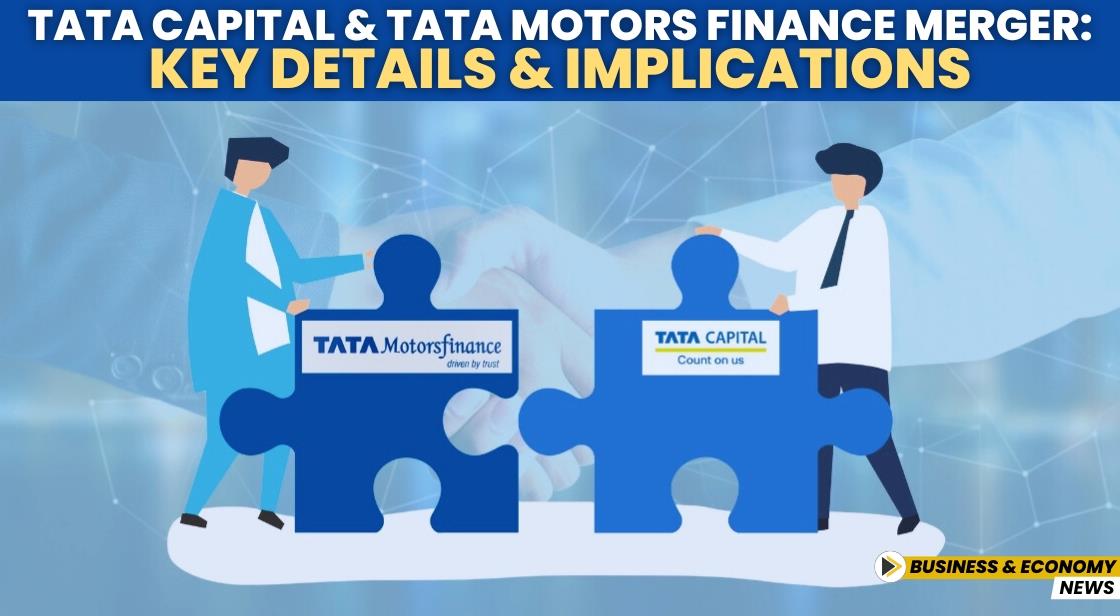Tata Capital and Tata Motors Finance Merger: Key Details and Implications

News Synopsis
The National Company Law Tribunal (NCLT) has instructed Tata Capital Ltd and Tata Motors Finance Ltd, two prominent non-banking financial companies (NBFCs) under the Tata Group, to convene meetings with their shareholders and creditors for the approval of their merger plan.
This strategic move aims to create a unified financial services powerhouse within the Tata ecosystem.
NCLT Directive for Merger Approval
On December 3, the Mumbai bench of National Company Law Tribunal (NCLT) , led by judicial member Lakshmi Gurung and technical member Charanjeet Singh Gulati, directed the NBFCs to seek consent from their stakeholders.
This decision marks a significant milestone in the merger process, which aims to bring together Tata Capital and Tata Motors Finance under a single umbrella.
About Tata Capital and Tata Motors Finance
Tata Capital Ltd:
-
Assets Under Management (AUM): ₹1.6 lakh crore
-
Offerings: Over 25 products catering to retail, SME, and corporate customers
-
Profit After Tax (FY24): ₹3,150 crore
Tata Motors Finance Ltd:
-
Specialization: Financing for vehicles manufactured by Tata Motors and its group companies
-
Profit After Tax (FY24): ₹52 crore
This merger is poised to combine Tata Capital’s extensive service portfolio with Tata Motors Finance’s expertise in commercial and passenger vehicle financing.
Purpose of the Merger
The merger aligns with the Tata Group's strategy to consolidate its financial services businesses into a single entity. Key objectives include:
-
Expanding Customer Base: The unified entity will have a broader geographical reach and a stronger presence in the rapidly growing commercial vehicle (CV) and passenger vehicle (PV) financing segments.
-
Leveraging Synergies: Expertise in credit business, innovative product offerings, and digital solutions will be pooled to enhance operational efficiency.
-
Strategic Focus: Tata Motors aims to exit non-core businesses, directing resources toward emerging technologies and product innovations.
-
Employee Growth Opportunities: The merger promises unique career growth prospects for employees within the integrated financial ecosystem.
Merger Timelines and Regulatory Approvals
Timeline:
-
The merger process is expected to take 9-12 months to complete, involving multiple regulatory clearances.
Approvals Secured:
-
Boards of Directors: Approved the merger plan on June 4, 2024
-
Regulators: Received nods from the Reserve Bank of India (RBI) and the Competition Commission of India (CCI)
Stakeholder Meetings:
-
As per NCLT’s directive, Tata Capital and Tata Motors Finance will seek approvals from shareholders and creditors (both secured and unsecured).
Final Ownership:
Post-merger, Tata Capital will issue equity shares to Tata Motors Finance’s shareholders. Tata Motors will hold a 4.7% stake in the merged entity.
Transaction Advisors
Key advisors facilitating the merger include:
-
For Tata Capital: Ernst & Young (E&Y), ICICI Securities, and Wadia Ghandy & Co
-
For Tata Motors Finance: PwC, Axis Capital, and AZB & Partners
Expert Opinions on the Merger
Growth Potential:
The merger is expected to establish a robust financial entity capable of scaling operations across diverse sectors. According to legal expert Ruchi Khatlawala, “Such schemes of arrangement take three to four quarters, considering the involvement of sector regulators and compliance requirements.”
Strategic Importance:
The move highlights Tata Motors’ commitment to optimizing its portfolio by focusing on core areas like next-gen technologies while leveraging Tata Capital’s expertise in financial services.
Conclusion
The merger of Tata Capital and Tata Motors Finance is a significant strategic initiative by the Tata Group, reflecting its vision to streamline operations and enhance customer offerings.
This consolidation is set to create a formidable entity with a diversified portfolio, robust asset base, and enhanced geographical presence, positioning it as a leader in the NBFC sector.
As the process unfolds, the unified entity will play a critical role in driving financial inclusion and innovation within India's evolving financial landscape.
You May Like









